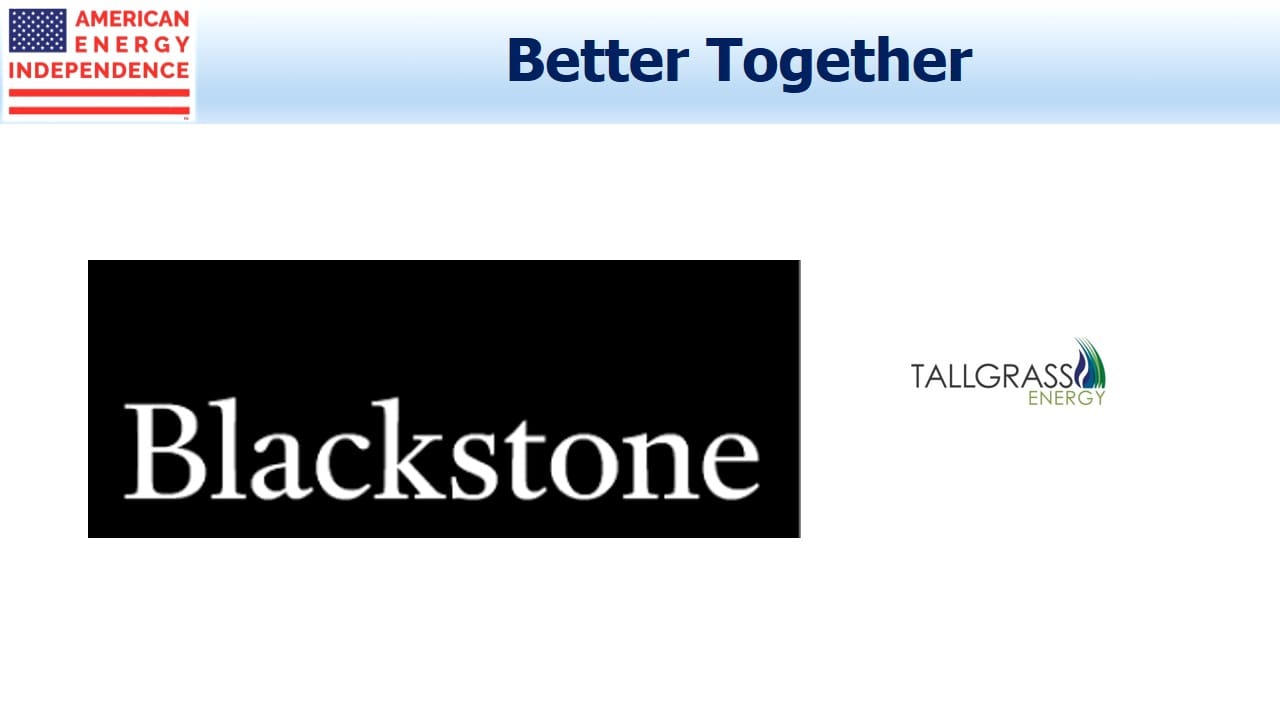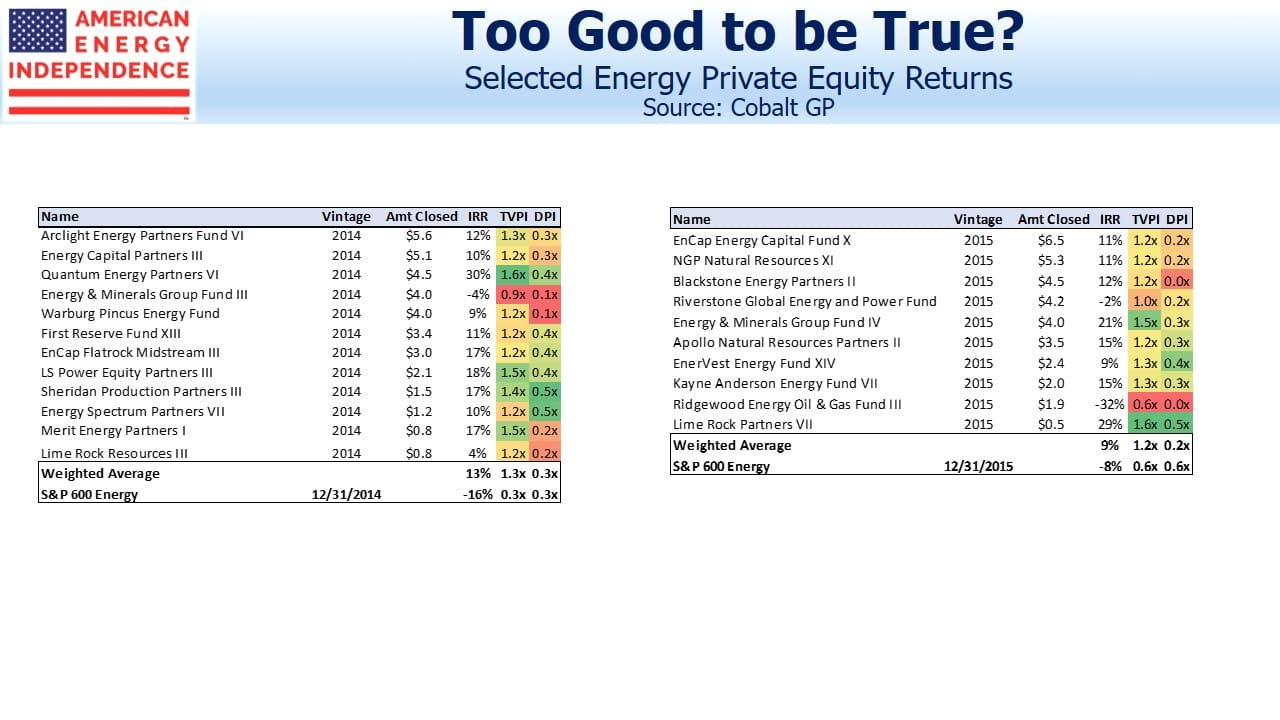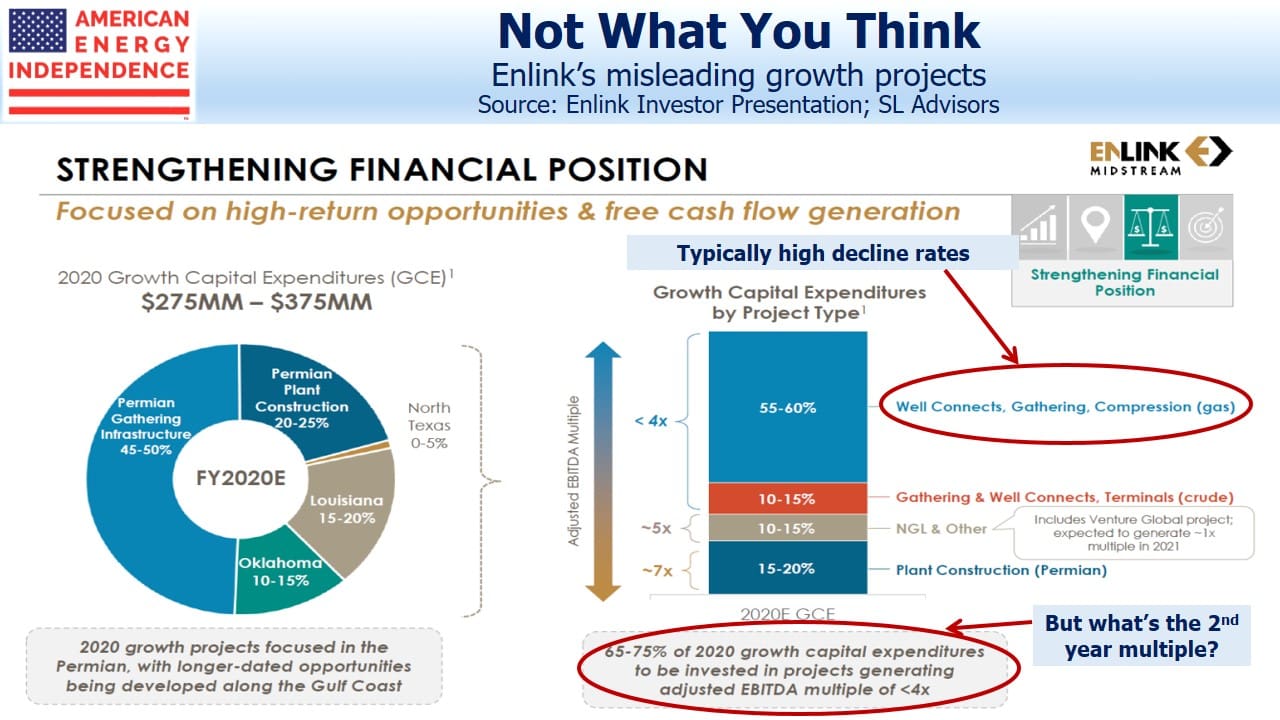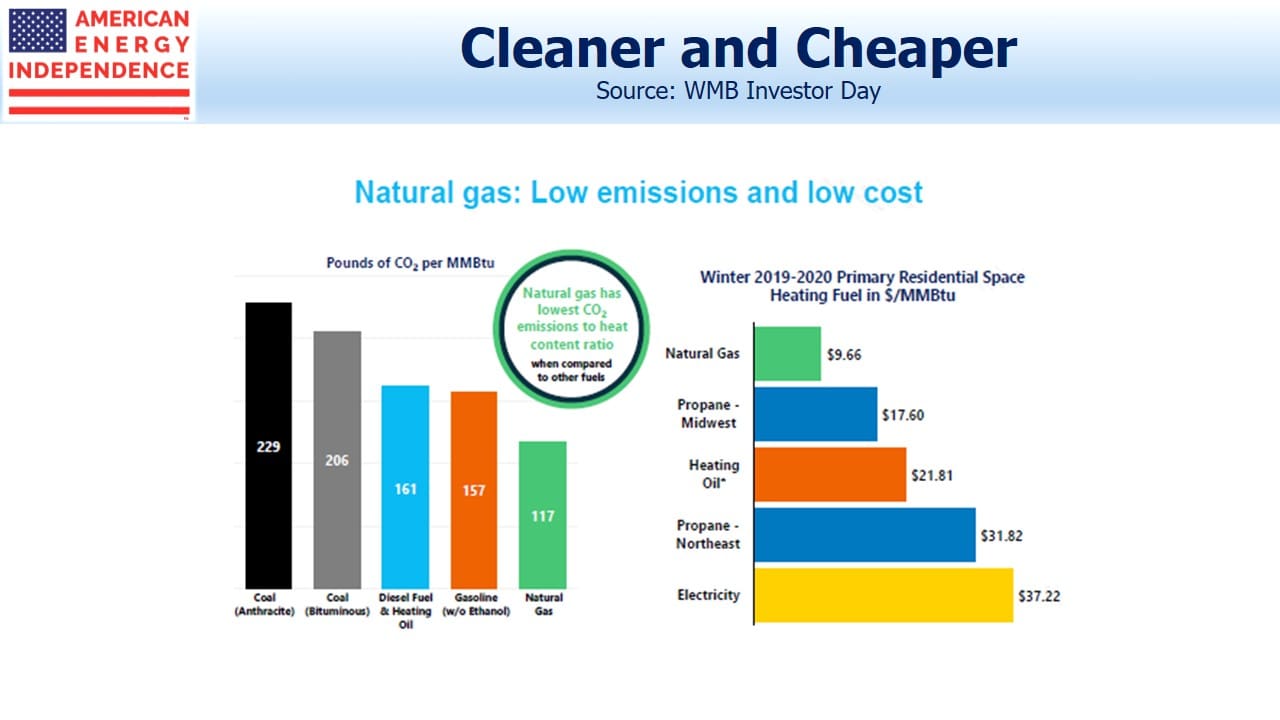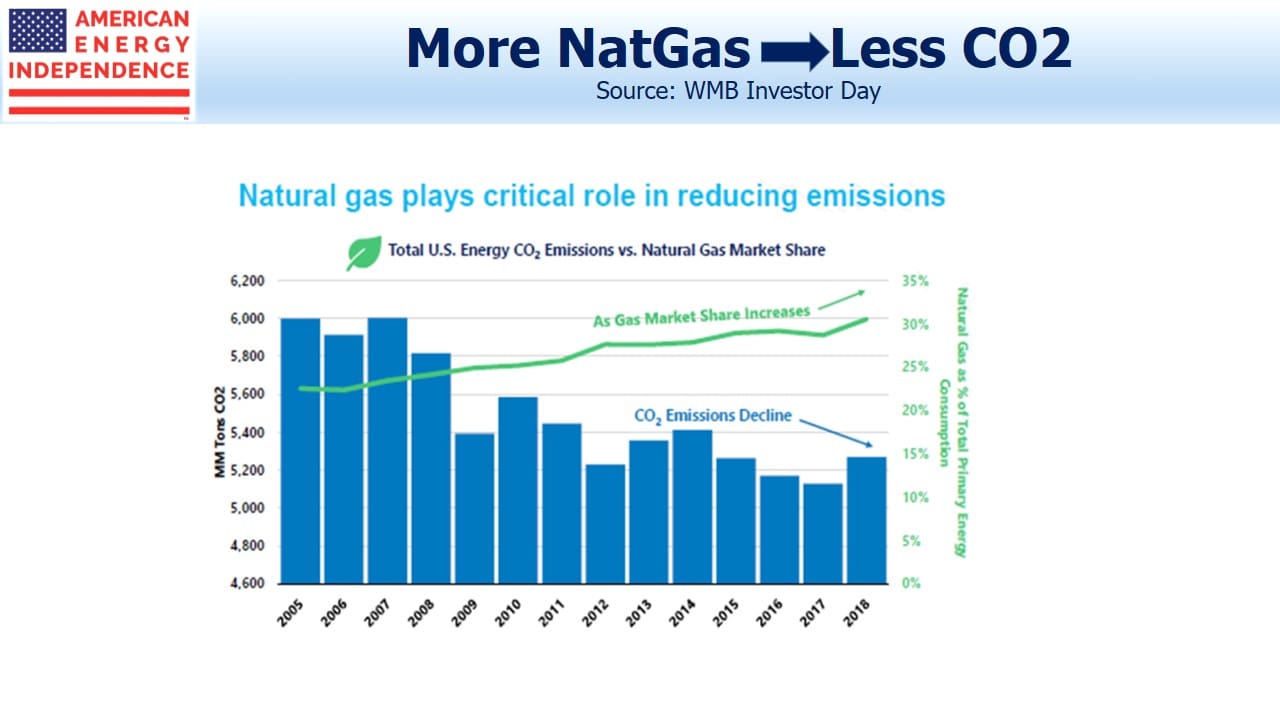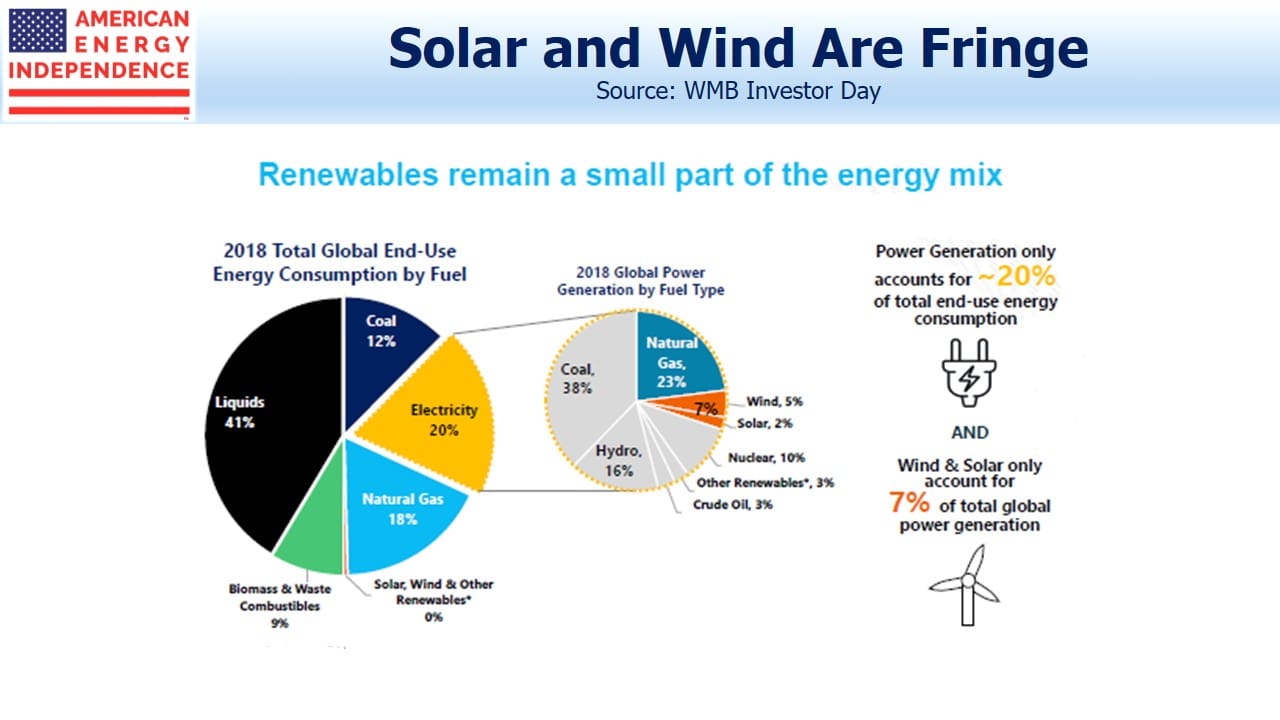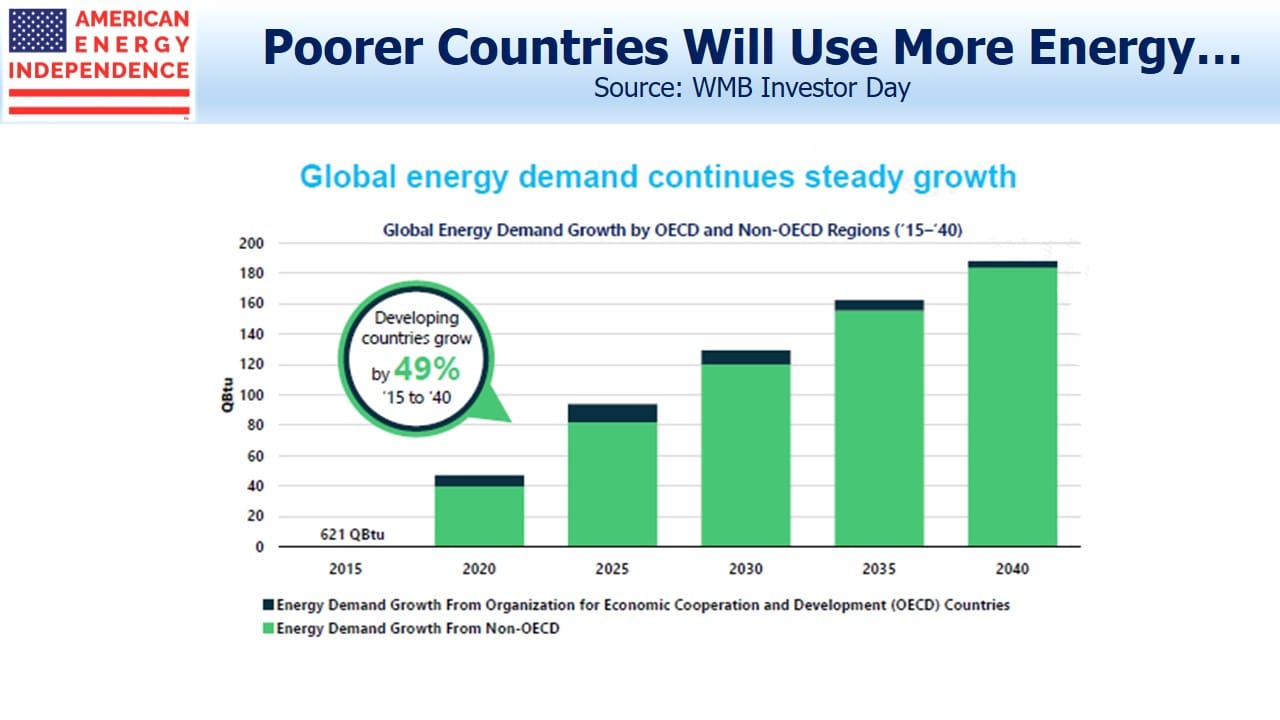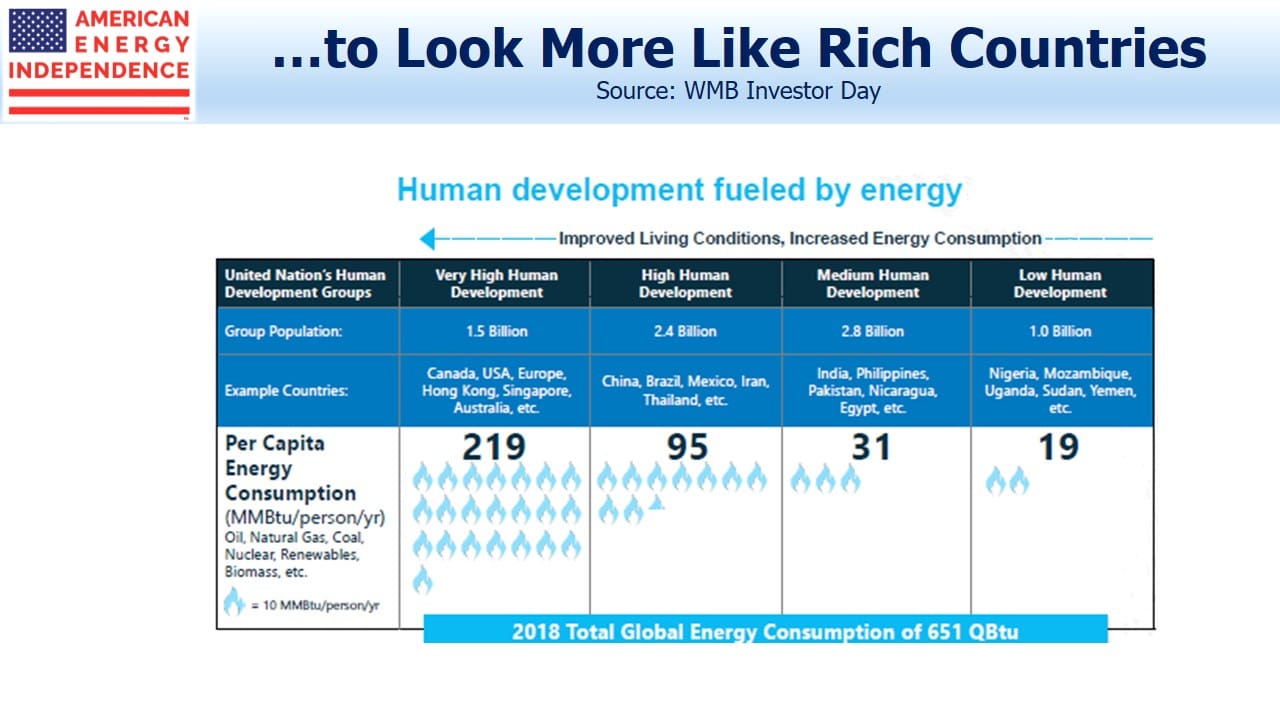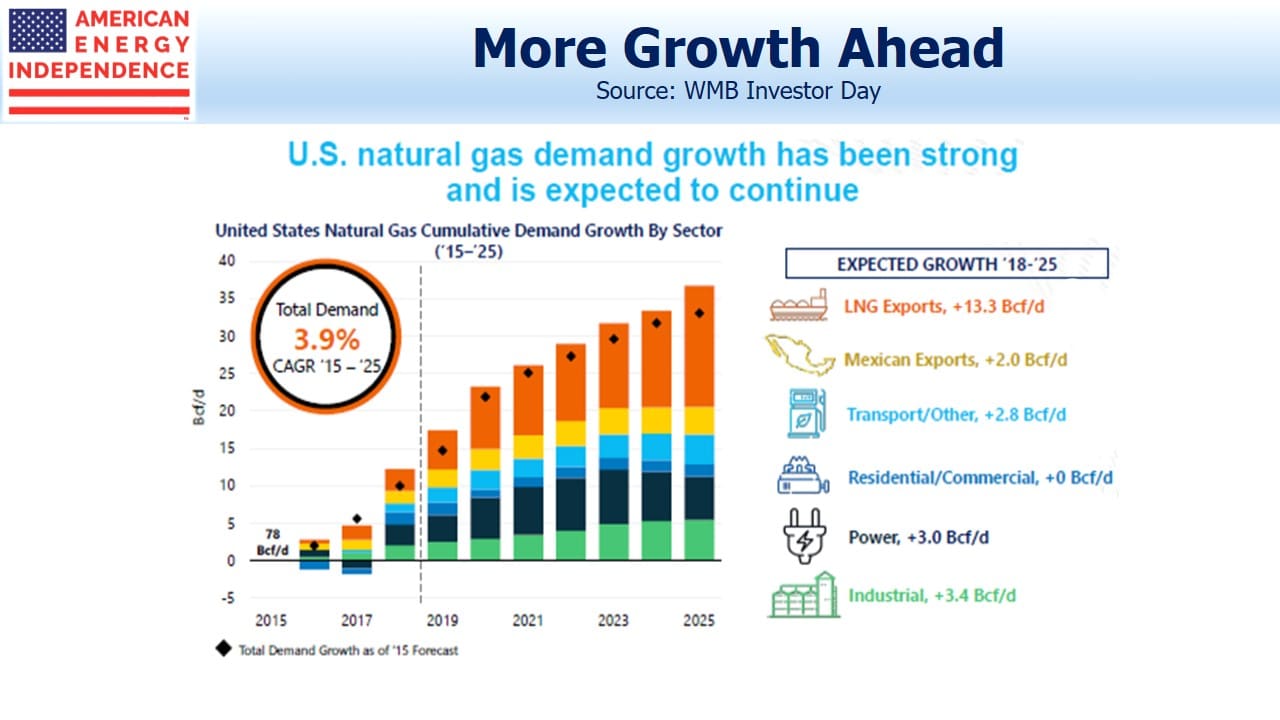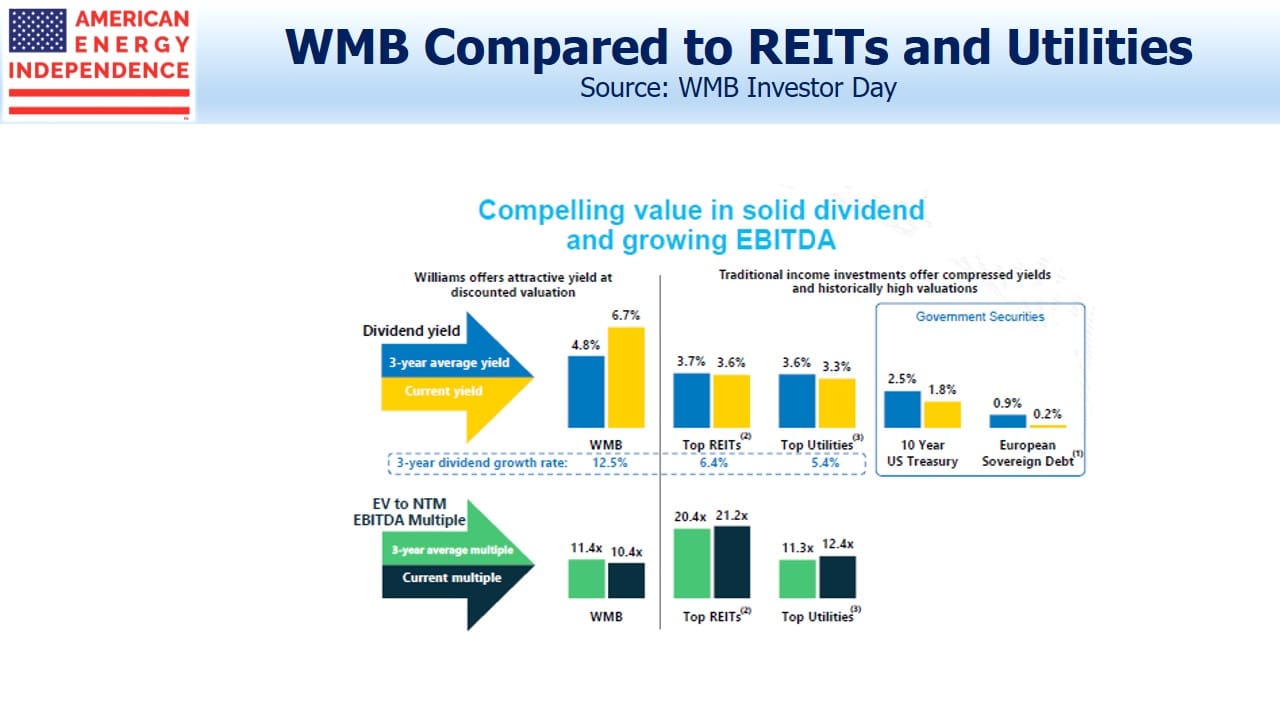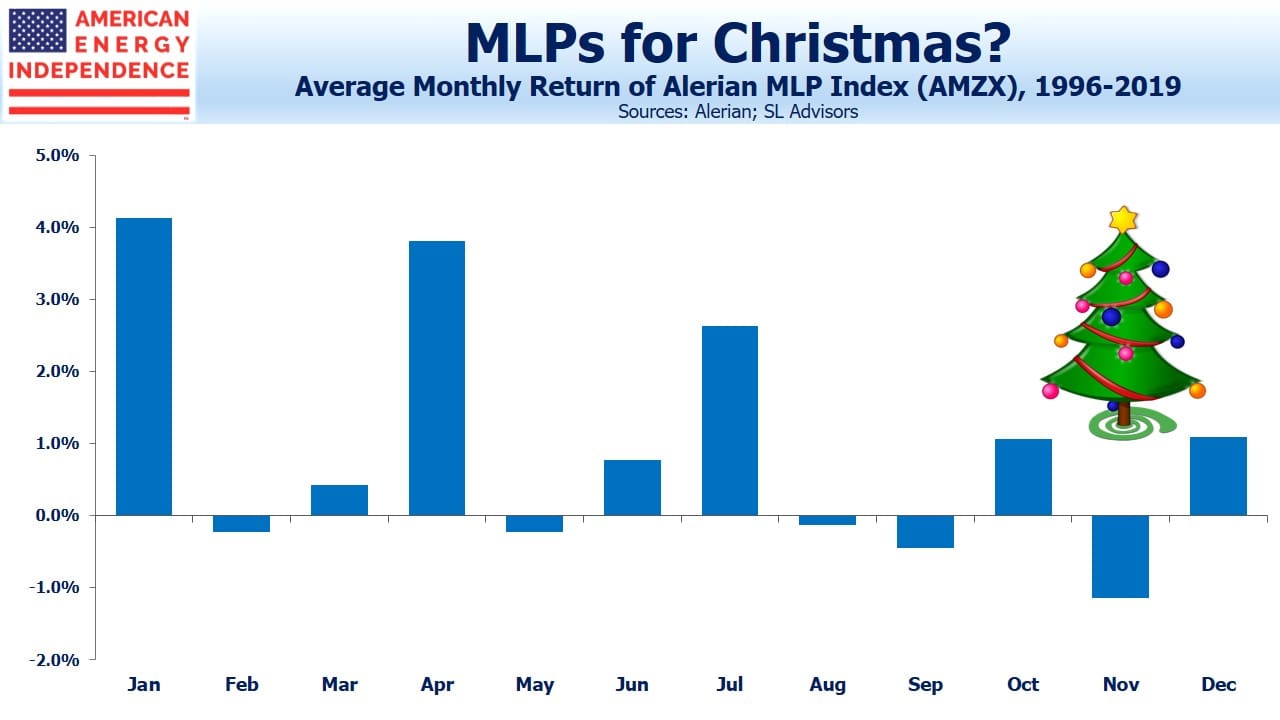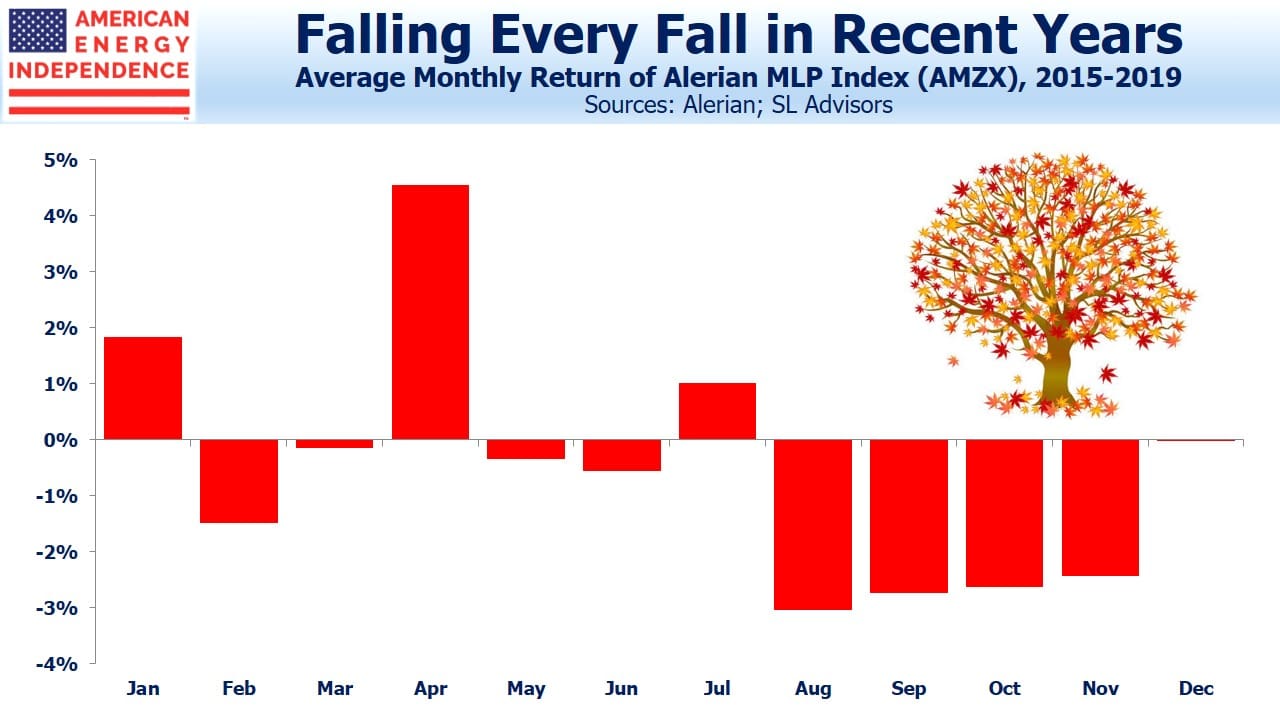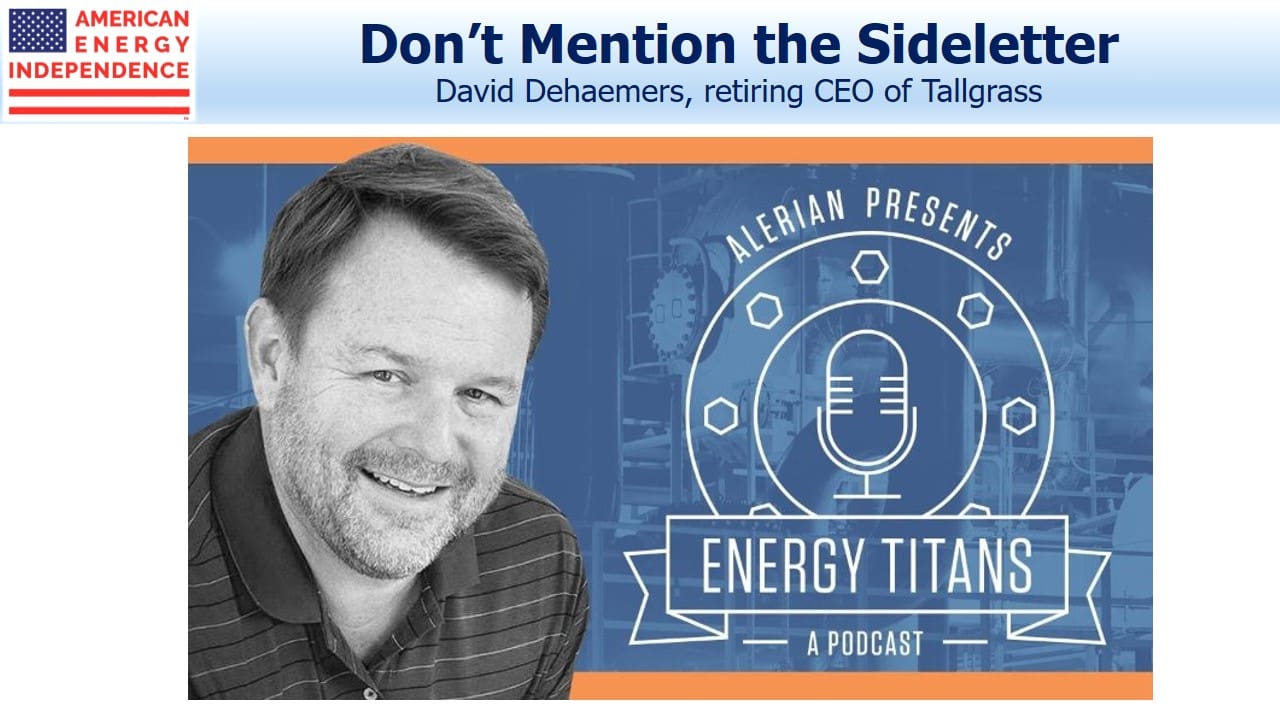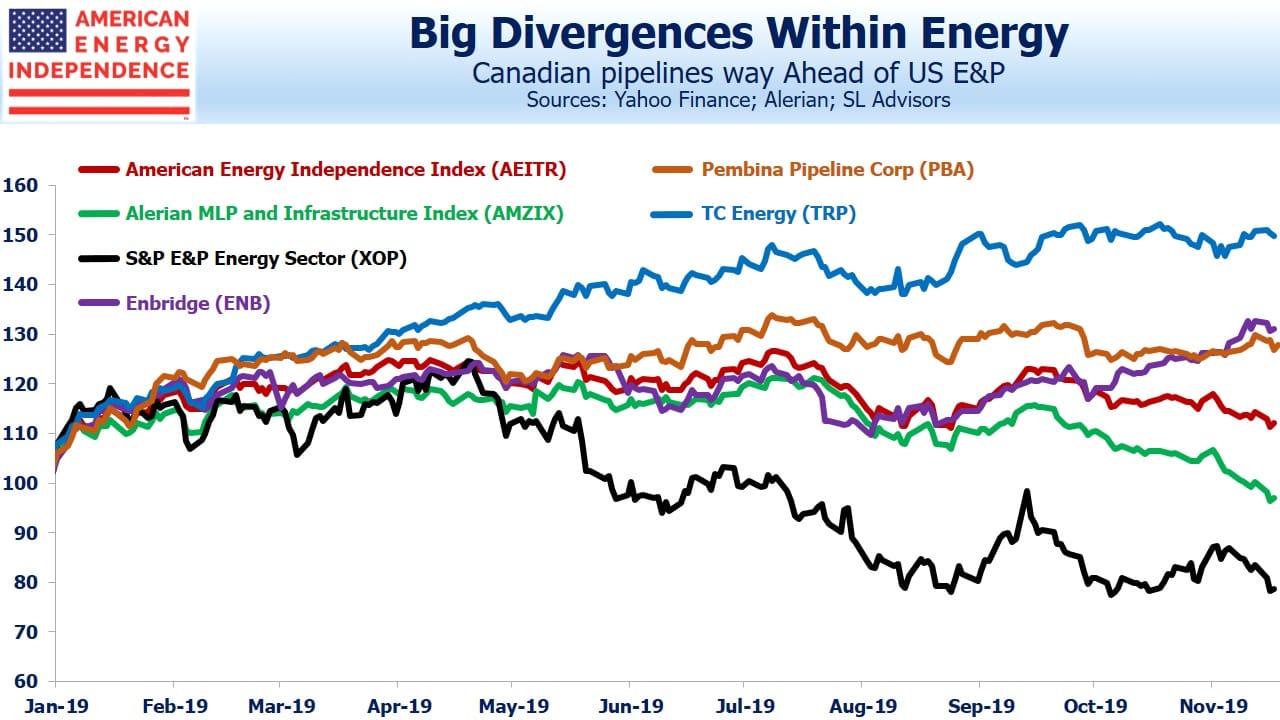Looking Back on 2019
Our twice-weekly blog saw a 30% increase in pageviews during 2019, along with a healthy jump in subscribers. It’s reposted across several other websites, and we believe it’s the most widely read blog on midstream energy infrastructure.
The interest level shown by readers, as well as questions asked by investors, both influence our choice of topics. Reviewing the past year’s stats provides a useful perspective on what pipeline investors are thinking about.
Our most read blog post of the year was When Will MLPs Recover? It was published on November 13th. It didn’t catch the low, which came in early December, but the recent rally has lifted prices nicely above their mid-November level. Coming on the heels of a weak October, always-fragile sentiment plunged to utter resignation among some. MLPs lagged midstream energy infrastructure by a wide margin in 2019, with the Alerian MLP Index up 9% compared with the American Energy Independence Index which is up 23%. It’s a consequence of the narrow investor base for MLPs.
The Coming Pipeline Cash Gusher was #2, offering our most eloquent response to the question about sector recovery. Free Cash Flow (FCF) has not historically been a metric used by MLPs. Two of the best performers in 2019, TC Energy (TRP) and Enbridge (ENB), do generate healthy FCF. Their capital allocation reflects values inspired by Canadian Presbyterian parsimony. Their strong 2019 returns suggest that as other pipeline companies increase FCF, their stock prices will also rise. We’ll be updating this analysis following 4Q19 earnings when companies provide updated 2020 growth capex guidance.
American Energy Independence is Imminent was #3, celebrating the many positives for the U.S. that increased domestic energy production is bringing.
AMLP’s Tax Bondage was #4. This was originally published in January 2018, and is our most read blog over the past two years. Explaining the disastrous tax drag to investors in AMLP invariably draws gratitude from the newly informed.
Why Energy Transfer Can’t Get Respect came in at #5. Too few writers are willing to be critical of the sector they follow. Your investment team is heavily invested in many of the companies we cover. When they do things we disagree with, I am incensed. We sell out if we conclude there’s no hope of management making sound decisions and acting with integrity. But it’s foolish to ignore valuation, and position sizing needn’t be binary (i.e. invested or not invested), it can be scaled to reflect all the relevant factors. Publicly criticizing a CEO to several thousand readers can provide the same satisfaction as impulsively dumping the stock, and often makes for better investment returns.
Our biggest single day of pageviews came on October 9th, driven by Energy Transfer’s Weak Governance Costs Them.
In addition to our blog, we do a weekly podcast which is about six months old. It is steadily gaining listeners. Like our blog, it covers the sector but also takes a political view on issues like climate change that have big implications for our business. A recent episode, The Coming Rally in MLPs, was our most popular podcast. A couple of my personal favorites are Celebrity Climate Change Shaming and Greta’s Grandstanding. The most vocal climate extremists are often those least capable of critical analysis. The climate change debate has too few pragmatists seeking practical solutions. The middle ground, where we sit, is wide open.
We also do a quarterly webinar and periodic videos. Stop Flaring is our most popular video.
Finally, Twitter is an under-utilized resource that surprisingly few financial advisors use. I follow energy journalists and publications, and generally limit my tweets to energy (although occasionally that self-restraint lapses). If you want to know which stories we’re following today, check out @SimonLack.
We enjoy the engagement and feedback on all the material we produce. American Energy Independence is a fantastic story for this great country. There’s a bright future ahead.
We are invested in Enbridge , Energy Transfer and TC Energy



